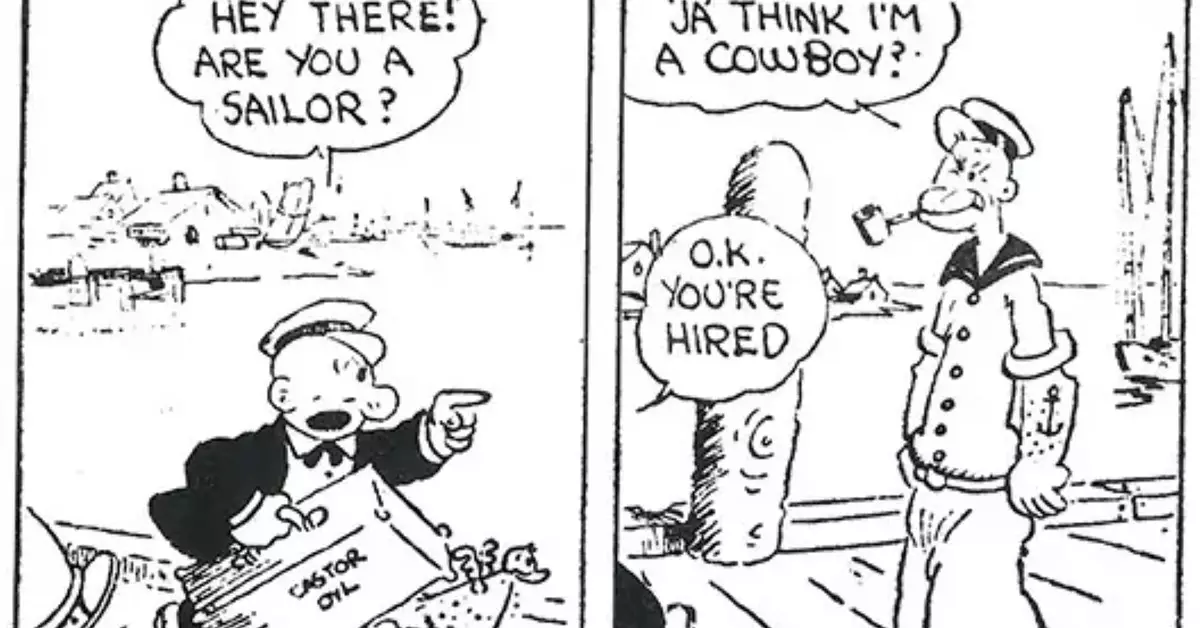As the calendar flips to a new year, the cultural landscape is enriched by a wave of creative freedom. The public domain serves as a celebratory testament to artistic expression, and in 2024, a myriad of works from 1929 have officially entered this realm, becoming ripe for reimagining and reuse. This year marks an outstanding fountain of creativity, as characters like Popeye and the adventurous Tintin become available for the public to embrace, revitalizing their stories in innovative ways.
A Landmark Year for Art and Film
The significance of 1929 is monumental, particularly because it signifies the advent of sound in cinema, thereby transforming the industry irrevocably. Duke University’s Center for the Study of Public Domain highlights the iconic works released that year, including revered films, literary masterpieces, and audacious artworks. Among major film contributions, you can find Alfred Hitchcock’s gripping first sound film, *Blackmail*, alongside *The Skeleton Dance* from Disney’s Silly Symphonies—an essential precursor to modern animation. These creations not only represent the evolution of their respective fields but also set the stage for countless future works.
The literary sphere is just as vibrant, with timeless novels and essays making their debut in the public domain. William Faulkner’s *The Sound and the Fury* is a compelling narrative that explores complex human emotions, while Agatha Christie’s *Seven Dials Mystery* brings intrigue and detective prowess to the forefront. The literary contributions of this era reflect the shifting paradigms of society, encapsulating everything from existential crises to intricate crimes, inviting contemporary interpretations.
The Beginnings of Beloved Characters
Notably, 2024 welcomes the first appearances of beloved characters like Popeye and Tintin, who bring with them a unique legacy. Popeye, initially introduced in E.C. Segar’s *Thimble Theatre* as a brawny sailor, intriguing character traits molded the humor and personalities that audiences came to adore. Interestingly, the Popeye we recognize today—complete with his iconic spinach-fueled strength—did not emerge until 1932. Consequently, while the nuances of his character are now up for grabs, the celebrated spinach may require a pause for caution, as warned by Jennifer Jenkins, director at Duke’s Center for the Study of Public Domain.
On the other side of the spectrum lies Tintin, a passionate young reporter accompanied by his faithful dog, Snowy. Hergé’s *Les Aventures de Tintin* represents not only thrilling adventures but also a profound cultural inquiry. However, restrictions remain for those in the European Union, where the 70-year post-mortem copyright law indicates that they will have to wait until 2054 to see Tintin take on public domain status.
The emergence of these works raises thought-provoking questions about copyright laws and their evolution. In 1998, a significant shift took place when US lawmakers opted to extend copyright protections, thus delaying the entry of many iconic works into the public domain. This decision is widely believed to have extended protections specifically to safeguard highly lucrative characters like Mickey Mouse, whose works began to slip into public domain just last year. This gradual relaxation of restrictions reflects a broader cultural conversation about ownership and accessibility in creative narratives, ultimately fostering a landscape that is both competitive and collaborative.
As characters like Popeye and Tintin now find themselves liberated from the constraints of copyright, it opens new avenues for innovation. Expect to see trial adaptations ranging from animated films to games and theatrical productions leveraging these renewed assets. With this new creative material at their disposal, artists and creators are given the exciting challenge of reinterpreting narratives, integrating modern contexts, and expanding the characters’ universes in ways that were previously not possible.
As we witness this influx of works enter the public domain, one cannot help but ponder the psychological and cultural implications tied to the accessibility of creative assets. The freedom to reinterpret iconic figures and stories is not merely a boon for creators but also offers audiences opportunities to engage with these narratives in fresh and contemporary ways. It revitalizes old tales and enables dialogues across generations, closing the gap between different eras of storytelling.
The public domain serves as a critical junction where history, creativity, and culture converge, and 2024 presents an exhilarating opportunity for storytellers and artists alike. With renowned characters like Popeye and Tintin becoming available, the potential for reimagined art draws closer, reminding us all of the transformative power of sharing narratives across time.


Leave a Reply
You must be logged in to post a comment.